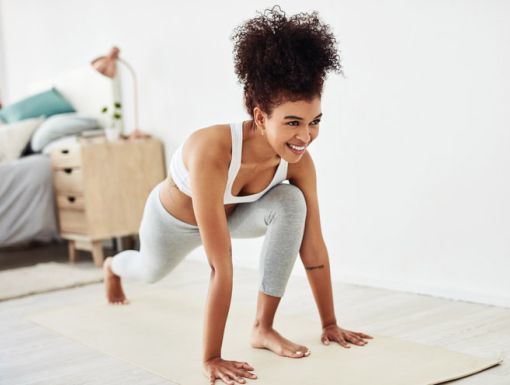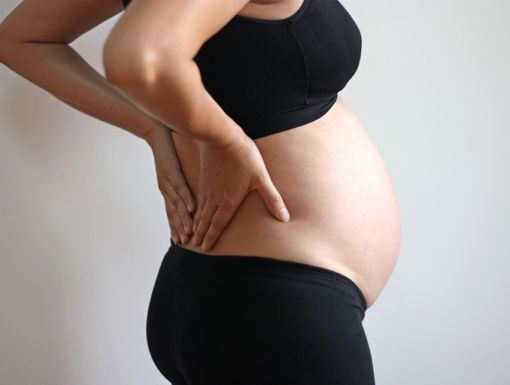
9 Causes of Lower Back Pain in Women
Back pain can affect anyone. But there are conditions unique to women that make them more susceptible to developing lower back pain. What’s more, this back pain is more likely to turn into chronic pain over time.
Conditions that can cause back pain
Premenstrual syndrome (PMS)
PMS is a combination of symptoms that many women get about a week or two before their period, and it ends a day or two after their period starts. Most women, over 90%, say they get some premenstrual symptoms. Lower back pain is a common symptom of PMS, and this may be related to increased inflammation during menstruation. Other symptoms of PMS include:
- Swollen or tender breasts
- Constipation or diarrhea
- Bloating or a gassy feeling
- Cramping
- Headache
- Lower tolerance for noise or light
Premenstrual dysphoric disorder (PMDD)
PMDD is an extreme form of PMS that occurs in a cyclic, or routine, pattern every month, starting one to two weeks before the menstrual cycle begins. The symptoms go away once the cycle starts to flow or within a few days after. While many women experience lower back pain with PMS, those with PMDD often experience this to a more extreme level. Other symptoms of PMDD can include:
- Sudden extreme sadness
- Thoughts of suicide or thinking you were better off dead
- Crippling anxiety
- Hopelessness, irritability, or irrational anger
- Extreme moodiness
- Epic fatigue
- Physical symptoms often associated with PMS, including breast tenderness, headache, generalized cramping, weight gain, binge eating and bloating.
Like PMS, an increase in inflammation secondary to hormonal changes can cause severe lower back pain in PMDD. However, it could also be a side effect of other PMDD symptoms, such as:
- Diarrhea
- Vomiting
- Pelvic pressure
Endometriosis
Endometriosis is a disease in which tissue, similar to the lining of the uterus, grows in other places in the body. It is one of the most common gynecological diseases, and its primary symptoms include pain and infertility. This condition impacts 11% of American women between age 15 and 44 and is especially common among women in their 30s and 40s. Lower back pain is a symptom of endometriosis, and the back pain may become chronic, with flaring during menstruation. This is particularly common if the ectopic tissue is close to the muscles of the lower back. Other symptoms of endometriosis include:
- Painful menstrual cramps, which may get worse over time
- Pain during or after sex
- Pain in the intestine or lower abdomen
- Painful bowel movements or painful urination during menstrual periods
- Heavy menstrual periods
- Premenstrual spotting or bleeding between periods
- Problems getting pregnant
- Stomach and digestive issues (constipation, bloating, nausea)
Pregnancy
Many women experience back pain during the course of their pregnancy. An estimated 60% of women experience back pain during pregnancy with 30% of women rating it as severe. Most pregnancy-related back pain occurs in the lower back, where the tailbone meets the pelvis in what is known as the sacroiliac or SI joints. There are several causes of pain in this area, and they include:
- Weight gain: Most women typically gain 25-35 pounds during pregnancy. The spine carries the stress of that weight. The growing baby’s weight also puts pressure on blood vessels and nerves in the back, abdomen, and pelvis.
- Hormone changes: During pregnancy, your body produces the hormone relaxin that causes ligaments in the pelvis to loosen to prepare your body for delivery of your baby. The stretching of the ligaments that support the lower back can result in lower back pain.
- Posture changes: The added weight on your body, the stretching ligaments, and the expansion of the pelvis collectively cause your posture to change. You may not even realize this change is occurring. The baby’s weight will pull your center of gravity forward and your body will compensate by swaying backward placing additional stress on your lower back.
- Muscle separation: As your baby grows and the uterus expands, it begins to stretch the abdominal muscles that connect the breastbone to the pubic bone, known as the rectus abdominis. If this muscle becomes overstretched and weak, the connective tissue that holds the left and right sides together can separate, causing what is known as diastasis recti. This separation causes a loss of strength in the core muscles that help to support the lower back resulting in increased pain.
Piriformis syndrome
Piriformis syndrome is a condition where the piriformis muscle, located in the buttock region, spasms and causes buttock pain. Women may be more affected by the hormonal and pregnancy-related changes in the pelvis, resulting in inflammation of the piriformis muscle. Inflammation and spasm of the piriformis muscle can also irritate the nearby sciatic nerve and cause pain, numbness, and tingling along the back of the leg and into the foot. Symptoms of piriformis syndrome include:
- A dull ache in the buttock that may worsen by hip movements
- Pain down the back of the thigh, calf and foot (sciatica)
- Pain when walking up stairs or inclines
- Increased pain after prolonged sitting
- Reduced range of motion of the hip joint
Osteoarthritis of the spine
Osteoarthritis is a degenerative joint disease affecting an estimated 27 million Americans. Osteoarthritis of the spine specifically affects the joints of the spine called the facets and the ligaments in the spine. It is common in women, with older people and people at an increased weight most at risk. Osteoarthritis of the lower back can cause:
- Joint tenderness and stiffness
- limited range of motion
- Pain in your upper or lower back, groin, buttocks, and thigh with walking or extension of the spine
Sacroiliac joint dysfunction
Sacroiliac joint dysfunction occurs when there is improper movement of the joints at the bottom of the spine that connect the sacrum to the pelvis. It is one of the more common causes of lower back pain affecting 15-30% of people who have lower back pain. Because women tend to have smaller sacroiliac joints, there can be a higher concentration of stress across the joints, which leads to a higher risk of sacroiliac joint dysfunction in women. Additionally, the ligaments of the sacroiliac joint often become weaker during pregnancy, leading to increased pain. Symptoms can include:
- Lower back pain
- A dull pain directly over the buttock, which may occasionally flare into a sharp pain
- A sharp, stabbing or shooting pain down your thigh or inner thigh, typically not going past your knee
Degenerative spondylolisthesis
Degenerative spondylolisthesis is a condition when one vertebra slips forward over the one below it due to degeneration of the ligaments, muscles, and joints of the spine that often occurs because of aging. It is more common in post-menopausal women due to lower levels of estrogen, which can increase the risk of degeneration. Symptoms can include:
- Muscle spasms in the hamstring (muscles in the back of the thighs).
- Back stiffness.
- Difficulty walking or standing for long periods.
- Pain when bending over or lifting objects
- Numbness, weakness, or tingling in the foot.
Spinal osteoporosis fractures
Osteoporosis is a bone disease that causes bones to become weak and brittle. It is a combination of low bone density and poor bone quality. According to the National Osteoporosis Foundation, about 54 million Americans have osteoporosis and low bone mass, placing them at increased risk for fracture. Studies suggest that approximately 1 in 2 women and up to 1 in 4 men age 50 and older will break a bone due to osteoporosis. Post-menopausal women may be at an increased risk due to a deficiency of the estrogen hormone, loss of bone at a younger age, and loss of bone at a more rapid pace.
Osteoporosis can cause bone pain including compression fractures in your spine, resulting in acute back pain. Osteoporosis of the spine may cause:
- Back pain that occurs typically in your mid-back or region between the mid and lower back
- Loss of height over time
- A stooped posture
How can I treat my back pain?
You may be able to ease some back pain with home remedies if it is related to menstruation or muscle strain, including:
- Over-the-counter nonsteroidal anti-inflammatory drugs (NSAIDs), including ibuprofen (Advil, Motrin), naproxen (Aleve), and aspirin, can help ease pain associated with back pain.
- Exercise - Staying active can improve your circulation and ease tense muscles. Exercise options that are shown to decrease low back pain include yoga, Pilates, and aerobic exercises (such as walking, biking, swimming and elliptical). Formal physical therapy can be a great place to start. You can learn safe techniques for exercises that are targeted for back pain. These can then become part of a new lifestyle and routine of home exercises.
- Stretching - Stretching can also improve range of motion and mobility. When stretching, do so slowly, without forcing the body into a painful position. Hold each stretch for 15-30 seconds and repeat 2-4 times. Some stretch examples include lumbar stretch, lower back stretch, lower back rotation, lumbar flexion, lumbar extension, piriformis stretch, hamstring stretch, calf stretch and back release. Click here for picture descriptions.
- Ice pack - If your back pain is due to a muscle strain or an injury, an ice pack may help reduce inflammation, pain, and bruising. Ice packs work best within the first 48 hours of a muscle strain or injury.
- Heating pad or a warm bath – Heat can help with circulation and reduce muscle pain and stiffness. Just be mindful that you are not using too hot a heating pad or bath.
- Good lumbar support – Sit in chairs with back supports and use a lumbar roll to maintain the normal curve of your low back. Ensure that the height of your chair is such that your feet can rest flat on the floor with your knees and hips level. The average American sits nine hours a day. Do not sit longer than one hour without getting up to stretch or move.
If you have back pain due to more advanced issues, like endometriosis, spinal degeneration, or osteoarthritis, you will need to seek medical help, especially if the pain does not go away with home treatments or if you begin to have issues standing or walking. To help with the pain, your doctor may recommend:
- Muscle relaxants - May be used to alleviate symptoms such as muscle spasms and pain
- Cortisone injections – injected directly into the area affected, cortisone injections can help relieve pain and reduce inflammation
- Hormonal birth control – can help alleviate symptoms related to endometriosis, PMS and PMDD
- Surgery to repair discs - There are several types of surgery for low back pain, including many minimally invasive techniques.


